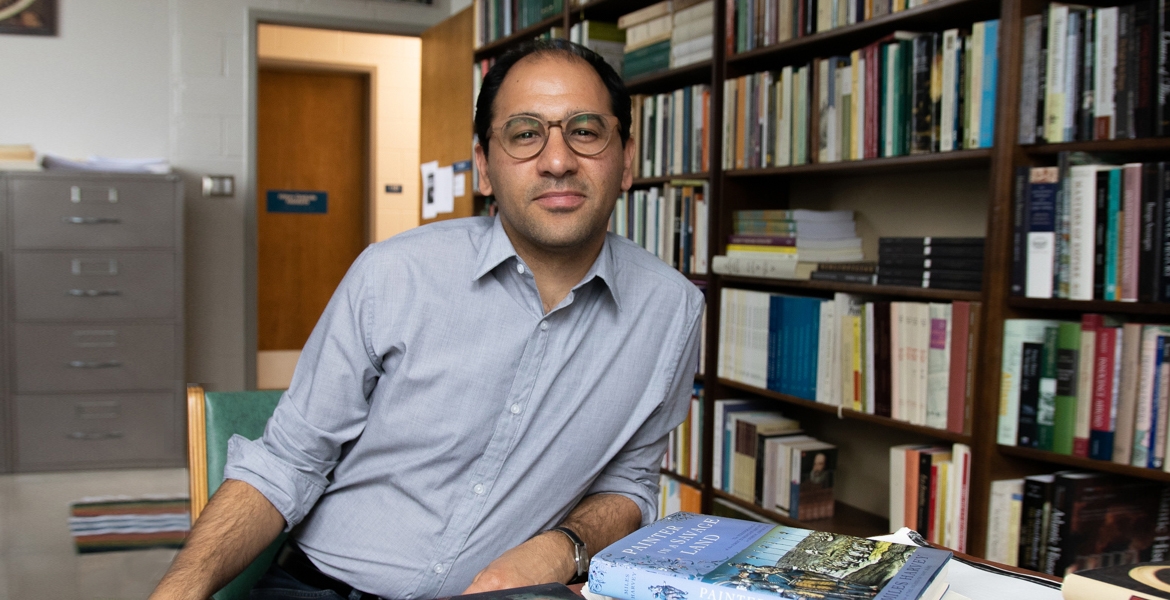
A manuscript cataloguing a portion of the library amassed by the illegitimate son of Christopher Columbus is not the lost Ark of the Covenant, but UWindsor history professor Guy Lazure feels a little like Indiana Jones for finding it.
Dr. Lazure was at the University of Copenhagen’s library in 2013, researching historic scholars from Seville, when the head of the archives asked him to peruse some books no one knew much about.
Among the books was a massive manuscript more than 30 cm thick, with no title page nor markings on the nondescript cover. It was known simply as “AM 377 fol.,” an internal tracking number categorizing it as part of a collection once owned by an Icelandic historian who died nearly 300 years ago.
After spending just 20 minutes deciphering the script and the notations in the margins, Lazure identified the manuscript as the Libro de los Epítomes — a book from Hernando Colón’s library that had been lost for centuries.
“There was a bit of an Indiana Jones aspect to this,” Lazure said. “We don’t have that many discoveries of that magnitude in our careers.”
Lazure’s find went unnoticed until recently, when the Danish library’s director included the book in a report about the archives. It made the news around the globe, and Lazure has been doing media interviews ever since.
“I didn’t expect any of this to happen,” he said of his newfound international fame. “I’m a bit surprised — pleasantly surprised.”
Hernando Colón, also known as Fernando Colón or Ferdinand Columbus, was the son of Christopher Columbus and Beatriz Enriquez de Arana, who would be described in today’s parlance as the famous explorer’s common-law spouse.
Beginning in 1509 and until his death in 1539, Colón toured Europe buying up all the printed material he could find with the goal of creating the largest library in the world. He hired a team to read the 15,000 to 20,000 books he had collected and write summaries of them.
The book Lazure discovered is believed to be one of those detailed catalogues. It contains entries written mostly in Latin — a few in Spanish — summarizing approximately 2,000 of the books in Colón’s collection.
It’s believed Colón’s team had created just two volumes of the catalogue before his death. The second volume is presumed lost.
Colón left his library to a nephew who didn’t share his appreciation for books. The collection was stored in the attic of the Seville Cathedral where they fell victim to neglect, theft, and water damage.
Lazure has travelled to Seville and seen some of the 4,000 books that remain of Colón’s library. At the bottom of the first page of each book, Colón had written a brief description of where and when he purchased the book, how much he paid and even what the exchange rate was on that day.
At the top right corner of that same page, a member of Colón’s team had written a number to track the book in the library.
Lazure had seen the numbers in the books and in less detailed catalogues Colón’s team had created. They are what tipped him off in Copenhagen that the manuscript he had before him was a partial catalogue of Colón’s collection.
Now, said Lazure, are plans to digitize the manuscript so that he and other scholars can study it. He has teamed up with Cambridge academic Edward Wilson-Lee who recently published a biography of Colón entitled The Catalogue of Shipwrecked Books.
The manuscript is important because it’s the only existing link to books lost long ago, Lazure said. It’s a catalogue of the early days of the printing press and the fruits of that budding printing industry and of Colón’s own travels.
“It’s rare to have this window on how a sixteenth-century learned scholar would read books.”
Lazure said, while his discovery was surprising, finding such an important manuscript so far from its original home is not.
“You have to look in less obvious places,” he said. “Maybe that second volume is still out there.”
─ Sarah Sacheli